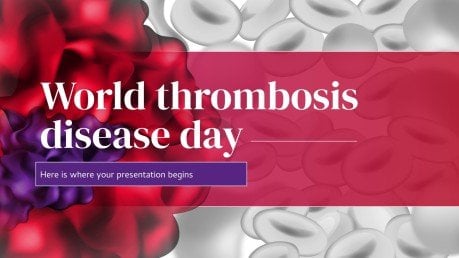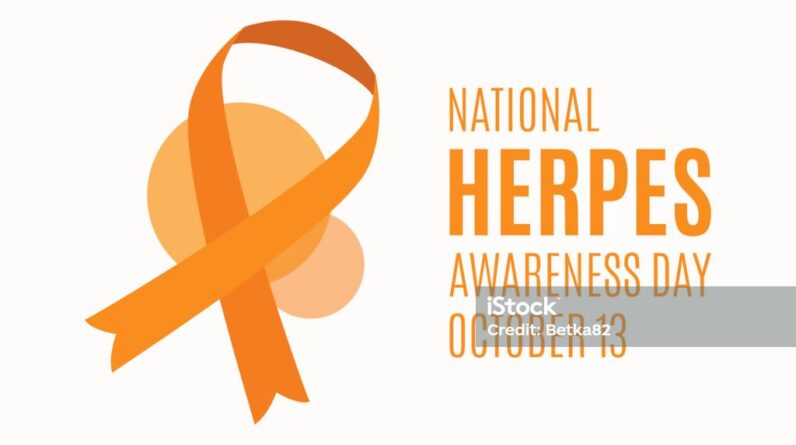
World Thrombosis Day aims to raise awareness about blood clots, their prevention, and treatment, leading to better outcomes for individuals. Thrombosis, which includes deep vein thrombosis and pulmonary embolism, is a significant global health problem that affects millions of people annually.
Educating the general public, healthcare professionals, and policymakers about the risks, symptoms, and preventive measures of thrombosis is crucial. Promoting understanding and taking proactive steps can help prevent unnecessary suffering and save lives.
Raising Awareness About Thrombosis Prevention
Thrombosis is a global health concern affecting millions of people worldwide. It refers to the formation of blood clots in veins or arteries, which can lead to serious complications, including heart attack, stroke, or even death. World Thrombosis Day is an annual event dedicated to raising awareness about thrombosis prevention and management.
With the aim of combating this condition, World Thrombosis Day brings together healthcare professionals, researchers, and patient advocates to educate the public and healthcare communities about the prevention, diagnosis, and treatment of thrombosis. The significance of this day lies in its ability to highlight the risk factors associated with thrombosis, such as obesity, smoking, sedentary lifestyle, and certain medical conditions, while emphasizing the importance of early detection and timely intervention.
Through various initiatives, including educational campaigns, public events, and digital awareness campaigns, World Thrombosis Day strives to save lives and reduce the burden of thrombosis-related disabilities. By promoting proactive measures such as physical activity, healthy eating, and adherence to prescribed medications, this global initiative ultimately aims to prevent thrombosis and improve the quality of life for individuals affected by this condition.
Spreading Knowledge On Thrombosis To Save Lives
The role of education in preventing thrombosis-related complications is crucial. Educating individuals about the risks, symptoms, and preventive measures of thrombosis can significantly reduce the number of cases and save lives.
Awareness campaigns play a powerful role in promoting thrombosis awareness. By reaching out to communities, healthcare professionals, and the general public through various channels, these campaigns can raise awareness about the condition and educate people on the importance of seeking timely medical attention.
Through the dissemination of accurate information, these campaigns aim to dispel misconceptions and highlight the significance of early intervention. Educating individuals on risk factors, lifestyle modifications, and preventive measures such as staying active and maintaining a healthy weight can minimize the incidence of thrombosis.
Spreading knowledge on thrombosis is a collective effort that requires collaboration between healthcare providers, organizations, and the public to ensure better understanding and prevention of this potentially life-threatening condition.
Unraveling Thrombosis: What You Need To Know
Thrombosis is a serious medical condition characterized by the formation of blood clots that can disrupt normal blood flow, leading to various health complications. It occurs when blood components, such as platelets and fibrin, clump together, creating a clot that can block blood vessels. This impedes blood and oxygen flow, potentially causing tissue damage or organ failure.
There are three main types of thrombosis: venous, arterial, and microvascular. Venous thrombosis typically affects the deep veins in the legs and can result in potentially life-threatening conditions like deep vein thrombosis (DVT) or pulmonary embolism (PE). Arterial thrombosis, on the other hand, occurs in the arteries and may lead to conditions such as heart attack or stroke. Microvascular thrombosis, which affects the smallest blood vessels, has been linked to conditions like diabetic retinopathy or chronic kidney disease.
Identifying the symptoms of thrombosis is crucial for early detection and timely treatment. Common signs include swelling, pain, warmth, and redness in the affected area. It is essential to seek medical attention if you experience any of these symptoms, as prompt intervention can prevent serious complications.
Identifying The Warning Signs: Symptoms And Diagnosis
Thrombosis can be a serious condition that requires prompt medical attention. Being familiar with the common symptoms of thrombosis is important, as early detection can greatly improve outcomes. Some of the warning signs to look out for include swelling and redness in the affected area, pain or tenderness, warmth to the touch, and visible veins on the skin surface. However, it is worth noting that not all cases of thrombosis present with visible symptoms, so it is crucial to also be aware of more subtle signs such as shortness of breath or chest pain.
Diagnosing thrombosis accurately typically involves a combination of medical history evaluation, physical examination, and diagnostic tests. Ultrasound imaging is commonly used to visualize blood flow and identify any blockages caused by a blood clot. CT scans and MRI may also be used to obtain detailed images of the affected area. Additionally, blood tests can be performed to measure specific markers that indicate the presence of thrombosis.
Early identification of thrombosis symptoms and accurate diagnosis are key factors in ensuring timely treatment and preventing complications. If you experience any potential symptoms of thrombosis, it is essential to seek medical attention promptly.
Assessing Your Risk: Factors That Contribute To Thrombosis
A person’s risk of developing thrombosis, a condition characterized by blood clot formation, can be influenced by various factors, including genetic and acquired risks as well as lifestyle choices.
Genetic Risk Factors:
| Blood clotting disorders | Factor V Leiden mutation | Prothrombin gene mutation |
| Antithrombin deficiency | Protein C or S deficiency | Hyperhomocysteinemia |
| Dysfibrinogenemia | Antiphospholipid syndrome |
Acquired Risk Factors:
- Previous history of thrombosis
- Cancer
- Prolonged immobility
- Pregnancy and postpartum period
- Hormone replacement therapy
- Oral contraceptives
- Smoking
- Obesity
Identifying the lifestyle factors contributing to thrombosis risk is crucial in prevention and management. Maintaining a healthy weight, regular physical activity, avoiding sedentary behavior, quitting smoking, and discussing the use of hormonal medications with healthcare professionals are some important steps to reduce the risk.
Proactive Measures: Preventing Thrombosis In Daily Life
Thrombosis can be prevented by adopting a healthy lifestyle. Regular physical activity plays a crucial role in reducing the risk of thrombosis. Engaging in activities such as walking, jogging, or cycling helps improve blood circulation. It is important to maintain proper hydration levels, as dehydration can increase the risk of blood clot formation. Keep yourself hydrated by drinking plenty of water throughout the day.
Eating a balanced diet rich in fruits, vegetables, and whole grains is essential to maintain a healthy weight. Obesity is a risk factor for thrombosis, so maintaining a healthy weight can help lower the risk. Limiting the intake of processed and fatty foods is also important.
Incorporating simple lifestyle changes can also make a difference in preventing thrombosis. Avoid sitting or standing for long periods without moving. Take breaks and stretch your legs if you have to sit or stand for a prolonged time. If you travel long distances, take breaks and walk around to improve blood circulation. Additionally, wearing compression stockings during travel or for prolonged periods of immobility may also be beneficial.
Medications And Treatments For Thrombosis
Anticoagulant therapies are a key component in the treatment of thrombosis. These medications work by inhibiting the clotting factors in the blood, preventing the formation of blood clots. Commonly prescribed anticoagulants include warfarin, which interferes with the production of clotting proteins, and heparin, which prevents the conversion of fibrinogen to fibrin.
Another type of anticoagulant, direct oral anticoagulants (DOACs), inhibits specific clotting factors such as factor Xa or thrombin. DOACs have gained popularity due to their ease of use and fewer drug interactions than warfarin. In some cases, thrombolytic therapy may be used, where medications are administered to dissolve the blood clot.
In addition to medications, surgical and interventional procedures can be employed for managing thrombosis. Thrombectomy, a surgical procedure, involves the removal of a blood clot directly from the affected blood vessel. Another option is angioplasty and stenting, which uses a balloon-like device to widen the blocked blood vessel and a stent to keep it open.
Inferior vena cava filters may also be inserted to catch and prevent blood clots from reaching the lungs, particularly in cases where anticoagulant therapy poses a risk of bleeding. These interventions can be effective in managing thrombosis and restoring normal blood flow.

Credit: www.youtube.com
Life After Thrombosis: Recovery And Long-term Care
Understanding the recovery process after experiencing thrombosis is crucial in ensuring a healthy future. After a thrombotic event, such as a blood clot, it is essential to make lifestyle changes and embrace ongoing care to prevent further complications.
Recovery starts with their initial diagnosis and treatment, which often involves blood thinners and other medications. Patients should diligently follow their prescribed treatment plan and attend regular check-ups with healthcare professionals. Staying active and exercising regularly under medical supervision helps improve circulation and prevent future clots.
Quitting smoking and maintaining a healthy weight is also essential in reducing the risk of future thrombotic events. Making necessary dietary changes, including reducing the intake of saturated fats and salt, can positively impact cardiovascular health. Additionally, it is important to manage comorbidities such as diabetes and hypertension to reduce the risk of further complications.
Education and awareness about thrombosis are key to preventing future occurrences. Individuals who have experienced thrombosis should proactively seek information and support from reliable sources. Understanding the signs and symptoms of new clots and promptly seeking medical attention can be life-saving.
By taking these steps and embracing a proactive approach to long-term care, individuals can reduce the risk of future thrombotic events and lead a fulfilling life after thrombosis.
Global Efforts To Tackle Thrombosis: World Thrombosis Day Campaigns
World Thrombosis Day is a global campaign to raise awareness about thrombosis and its impact on people’s health. The initiative brings together organizations, healthcare professionals, and patient advocates worldwide to educate and inform the public about the importance of thrombosis prevention and treatment.
The success of World Thrombosis Day can be seen in the remarkable achievements made in tackling thrombosis on a global scale. Various campaigns and activities have been organized to spread awareness and promote prevention strategies. These efforts have led to increased knowledge and understanding of thrombosis among individuals, healthcare providers, and policymakers.
Through World Thrombosis Day initiatives, numerous success stories have emerged, showcasing the positive impact of raising awareness and encouraging preventive measures. These success stories include improved healthcare practices, reduced incidence of thrombosis-related complications, and enhanced patient outcomes.
The global impact of World Thrombosis Day initiatives is evident in the growing recognition of thrombosis as a significant healthcare issue. Through continuous efforts, the campaign continues to make progress in increasing public awareness, improving prevention and treatment strategies, and ultimately saving lives.
The Role Of Healthcare Professionals In Thrombosis Prevention
The role of healthcare professionals in thrombosis prevention is crucial for creating awareness and ensuring optimal patient care. Their involvement plays a significant role in educating patients about the risks associated with thrombosis and the importance of prevention. Healthcare providers can actively participate in raising thrombosis awareness by implementing several strategies.
-
- Patient Education: Healthcare professionals should educate patients about thrombosis’s risk factors, symptoms, and consequences. They can provide information on preventive measures such as regular physical activity, maintaining a healthy weight, and avoiding prolonged immobility.
-
- Support and Guidance: Healthcare providers can support patients by addressing their concerns and clarifying any misconceptions about thrombosis. They should emphasize the importance of following prescribed medications and treatments.
-
- Collaboration and Advocacy: Healthcare professionals can collaborate with other healthcare providers and organizations to raise thrombosis awareness. They can actively participate in initiatives like World Thrombosis Day to support and spread knowledge about thrombosis prevention and management.
-
- Multidisciplinary Approach: Implementing a multidisciplinary approach involving various healthcare professionals, including physicians, nurses, pharmacists, and physical therapists, can facilitate comprehensive thrombosis prevention and management.
Patient Perspectives: Sharing Personal Experiences And Lessons Learned
Real-life stories can provide valuable insights and inspiration for individuals affected by thrombosis.
Living with thrombosis can be a challenging journey, but hearing about the experiences of others who have faced similar struggles can offer hope and encouragement. Through sharing their personal stories, individuals affected by thrombosis can raise awareness, educate others, and support those who may be going through similar experiences.
These real-life stories highlight the strength and resilience of individuals who have overcome thrombosis. Their journeys serve as powerful examples of how it’s possible to overcome adversity and regain control of one’s life. They have learned valuable lessons about self-care, managing symptoms, and navigating the healthcare system.
By sharing their experiences and lessons learned, these individuals provide hope and inspiration to others facing thrombosis challenges. Their stories serve as a reminder that no matter how difficult the journey may be, there is always the potential for recovery and a better quality of life.
Frequently Asked Questions Of World Thrombosis Day
What Is The Theme Of The World Thrombosis Day?
The theme of World Thrombosis Day focuses on raising awareness about blood clots and their prevention.
Why Do We Celebrate World Thrombosis Day Today?
World Thrombosis Day is celebrated today to raise awareness about the dangers of blood clots and the importance of prevention. It highlights the need for knowledge, research, and interventions to reduce the impact of thrombosis on global health.
What Is The Theme For World Thrombosis Day 2023?
The theme for World Thrombosis Day 2023 has not been announced yet. Please stay tuned for updates.
What Is A Thrombosis?
A thrombosis is a condition where blood clot forms in a blood vessel, blocking blood flow. It can happen in any body part and can be life-threatening if the clot travels to the lungs or brain.
Early medical intervention is crucial to prevent complications.
Conclusion
Thrombosis is a serious condition that affects millions of people worldwide. On World Thrombosis Day, it is essential to raise awareness about thrombosis’s impact and prevention’s importance. By understanding the causes, symptoms, and risk factors associated with thrombosis, individuals can take proactive steps to reduce their risk.
Through educational campaigns and increased research, we can strive towards a world free from the burden of thrombosis. Together, let us work towards a healthier future.





